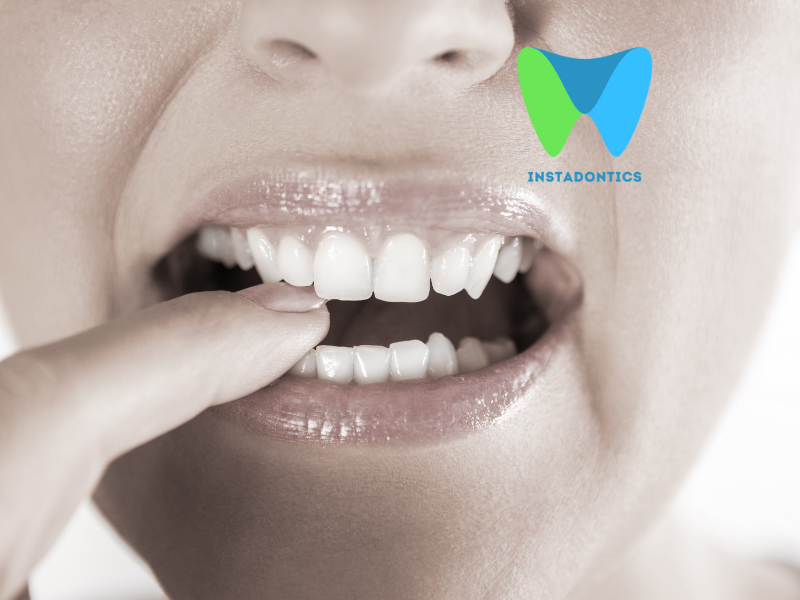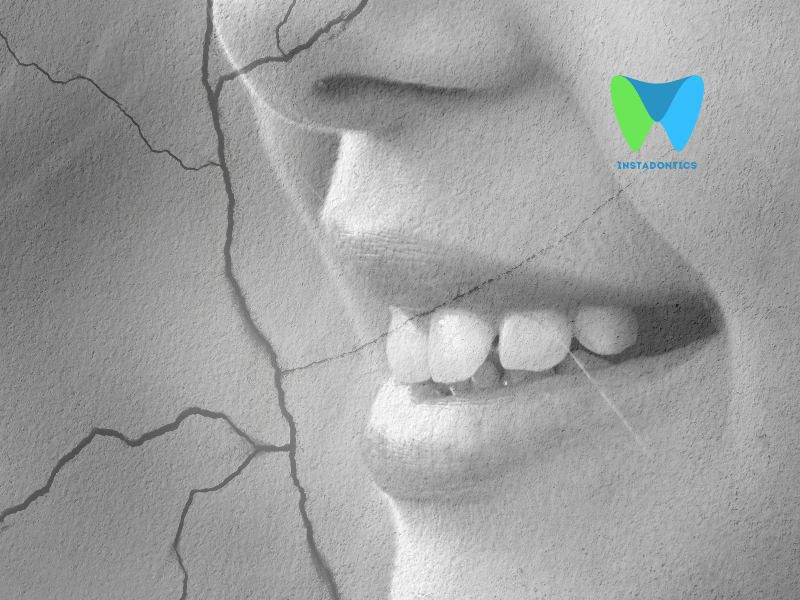How to Ease Pain After a Tooth Extraction | Tooth extraction is a common dental procedure, whether it’s due to severe decay, damage, overcrowding, or impacted teeth. While extractions are generally safe, the recovery process can cause discomfort and pain. After the extraction, it’s normal to experience some degree of swelling, bleeding, and soreness. However, knowing how to manage pain and promote healing can significantly enhance your recovery and reduce complications. This blog post will explore 13 effective methods—backed by both research and expert advice—to help ease pain after a tooth extraction.
1. Follow Your Dentist’s Instructions
The first and most important step in ensuring a smooth recovery is adhering to the instructions given by your dentist. After a tooth extraction, your dentist will likely provide guidelines for post-operative care, such as how to manage bleeding, pain, and swelling. According to a study published in the Journal of Oral and Maxillofacial Surgery, following these instructions is crucial for preventing complications like dry socket, infection, and prolonged pain.
2. Use Cold Compresses to Reduce Swelling
Swelling is a natural part of the healing process after a tooth extraction, but it can be painful and uncomfortable. A cold compress can significantly help reduce inflammation and alleviate pain. Research in the Journal of Clinical Dentistry has shown that applying ice or a cold compress in the first 24 hours after the procedure can minimize swelling and pain.
To use a cold compress, wrap ice in a clean cloth or use a gel ice pack and apply it to your face near the extraction site. Aim to keep the compress on for 15-20 minutes, with a break of at least 20 minutes between applications. Be sure to avoid placing ice directly on the skin to prevent frostbite.
How to Ease Pain After a Tooth Extraction
3. Over-the-Counter Pain Relievers
After the extraction, pain management is essential to your recovery process. Nonsteroidal anti-inflammatory drugs (NSAIDs) like ibuprofen (Advil, Motrin) or acetaminophen (Tylenol) can be highly effective in managing pain and reducing inflammation. A study published in The Journal of the American Dental Association concluded that NSAIDs are among the most effective treatments for managing mild to moderate pain after dental procedures.
Make sure to follow the dosage instructions provided on the packaging or as directed by your dentist. Always consult with your healthcare provider if you have any underlying health conditions that could affect the use of these medications.
4. Rest and Elevate Your Head
Rest is essential for recovery after a tooth extraction. According to a review published in Oral Surgery, Oral Medicine, Oral Pathology, Oral Radiology, proper rest helps your body heal faster and reduces the chances of complications. When you rest, it’s important to keep your head elevated, particularly during the first 24 hours.
Lying flat can increase blood flow to the extraction site, potentially causing more swelling and discomfort. Instead, rest with your head propped up on pillows. Sleeping with your head elevated can also help reduce swelling and make you more comfortable at night.
5. Maintain Oral Hygiene but Avoid the Extraction Site
Good oral hygiene is vital to prevent infection and promote healing. However, immediately after a tooth extraction, you should avoid brushing or rinsing near the extraction site for the first 24-48 hours. According to the American Dental Association, gentle brushing is important once you’ve passed the initial recovery phase, but avoid disturbing the blood clot that forms in the socket.
To clean the rest of your mouth, use a soft-bristled toothbrush, and rinse gently with warm saltwater or an antiseptic mouthwash recommended by your dentist. Avoid any vigorous rinsing that could dislodge the blood clot and result in dry socket, a painful condition where the clot is lost, and the bone is exposed.
How to Ease Pain After a Tooth Extraction
6. Use Warm Saltwater Rinses
A warm salt water rinse can soothe the extraction site, promote healing, and reduce the risk of infection. According to a study in The Journal of Periodontology, saltwater has natural antibacterial properties that help cleanse the wound and reduce inflammation.
To make the rinse, dissolve half a teaspoon of salt in warm water and gently swish it around your mouth. Spit it out after 30 seconds. Repeat this process 2-3 times a day, especially after meals, to keep the area clean and prevent infection.
7. Avoid Smoking and Alcohol
Smoking and alcohol can hinder the healing process after a tooth extraction. According to research in The Journal of Oral and Maxillofacial Surgery, smoking impairs blood flow, increases the risk of infection, and can lead to dry sockets
. Alcohol can also interfere with the healing process by impairing blood clotting and irritating the wound.
It is highly advisable to avoid smoking and drinking alcohol for at least 48-72 hours after your tooth extraction. This will give your body a better chance to heal and reduce the risk of complications.
8. Eat Soft Foods and Stay Hydrated
After a tooth extraction, eating hard, crunchy, or chewy foods can cause discomfort and may even damage the extraction site. Research in the British Dental Journal suggests that eating soft, bland foods can reduce the strain on your healing mouth and promote faster recovery.
Opt for foods like mashed potatoes, yogurt, scrambled eggs, soup (without hot liquids), and smoothies during the first few days of recovery. Be sure to avoid hot foods and drinks, as they may increase swelling and pain. Additionally, staying hydrated is essential for maintaining overall health and promoting healing.
9. Prescription Medications for Severe Pain
If over-the-counter pain relievers aren’t sufficient to manage your pain, your dentist may prescribe stronger pain medication. Research from the American Dental Association highlights that opioids, such as hydrocodone or oxycodone, may be prescribed for more severe pain after tooth extractions.
However, these medications should be used with caution due to their potential for dependence and side effects. Always follow your dentist’s recommendations for dosage, and only take the prescribed medication as directed. If you experience any adverse effects, contact your dentist immediately.
10. Herbal Remedies and Natural Products
Several herbal remedies may help alleviate tooth extraction pain and promote healing. Chamomile tea, for example, has anti-inflammatory properties that can help calm the extraction site and reduce swelling. Research published in BMC Complementary Medicine found that chamomile is a natural anti-inflammatory agent that can help reduce pain and speed up recovery.
You can drink chamomile tea, use it as a mouth rinse, or apply chamomile oil to the affected area (after diluting it with a carrier oil). Other natural remedies like clove oil and peppermint may also help numb the pain and promote relaxation.
11. Avoid Excessive Physical Activity
Intense physical activity after a tooth extraction can increase blood pressure and blood flow to the extraction site, leading to more swelling and discomfort. According to a study in The Journal of Oral Rehabilitation, patients should avoid strenuous physical activities such as exercise, heavy lifting, or bending for the first 2-3 days following an extraction.
Take it easy and allow your body to heal. Focus on rest and light activities, such as reading or watching TV, during your recovery period.
12. Ice Cream and Cold Foods for Comfort
Cold foods like ice cream or popsicles not only provide comfort but can also help numb the area around the extraction site. According to research published in the International Journal of Oral and Maxillofacial Surgery, cold foods can have a cooling effect that reduces swelling and helps alleviate pain.
Choose ice cream or popsicles that are smooth and free from hard or crunchy pieces. Avoid anything too cold, as extreme temperatures can aggravate the pain.
13. Monitor for Complications
Lastly, it’s important to monitor for any signs of complications after your extraction. Common post-extraction complications include dry socket, infection, or excessive bleeding. According to a study published in The Journal of the American Dental Association, dry socket occurs when the blood clot dislodges from the socket, exposing the bone and nerves, causing intense pain.
If you experience persistent pain, increased swelling, fever, or any other unusual symptoms, contact your dentist immediately. Early intervention can prevent further complications and ensure a faster recovery.
How to Ease Pain After a Tooth Extraction
Tooth extractions, while common, can cause significant discomfort during the healing process. However, by following the right steps and using the remedies listed above, you can manage pain, reduce swelling, and promote faster healing. Always remember that post-operative care, rest, and good oral hygiene are key to preventing complications and ensuring a smooth recovery.
While home remedies can help ease pain in the short term, it’s important to visit your dentist regularly for follow-up appointments and professional advice. With proper care, your recovery can be as comfortable and efficient as possible, allowing you to get back to your regular routine sooner.



